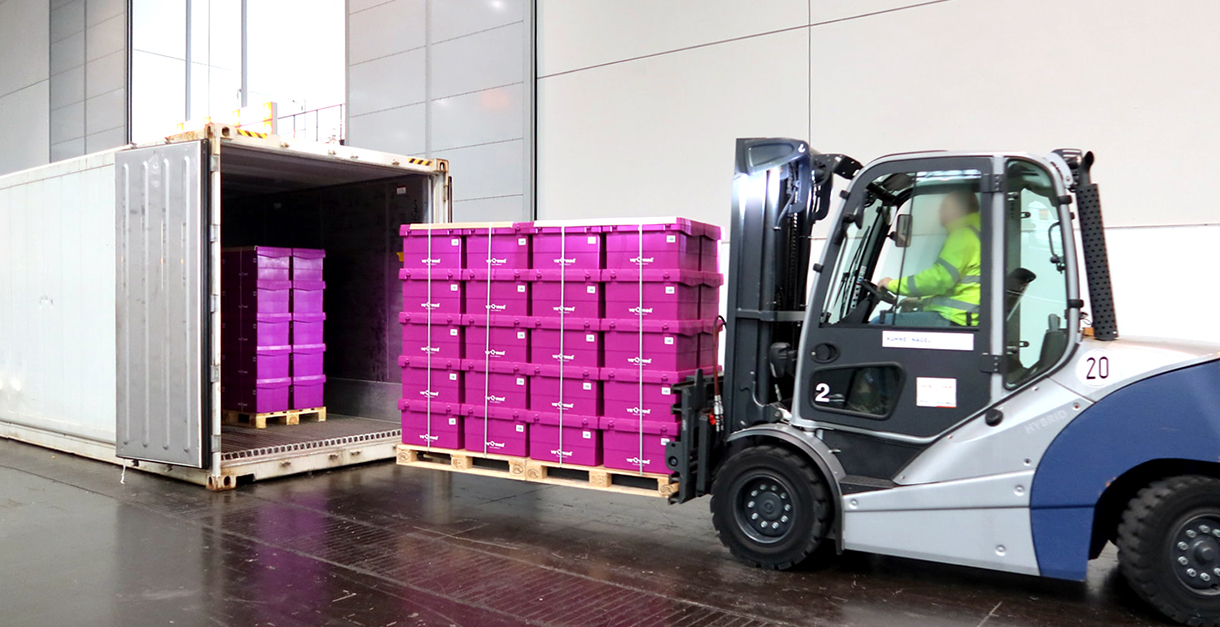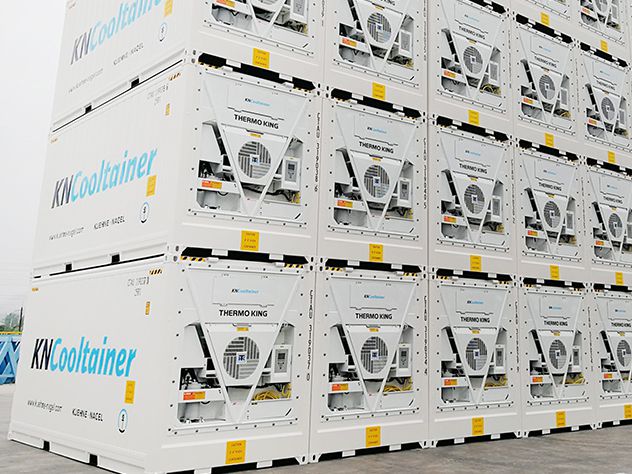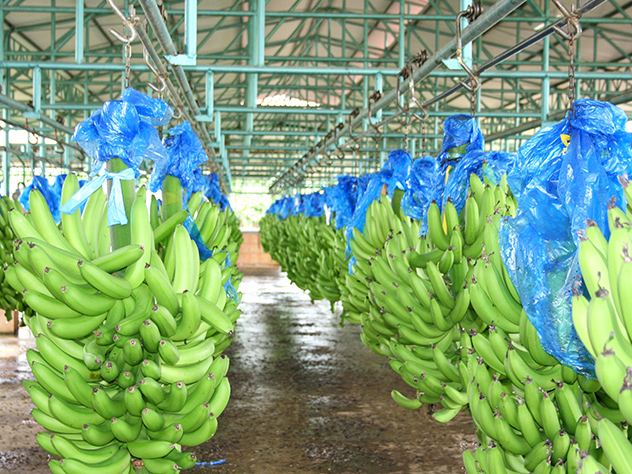Maintaining freshness is of utmost importance during transport. Perishable goods must be transported under optimal conditions to ensure that they arrive in pristine condition. All standard reefer containers are built to maintain a temperature between +25° C and -25° C for chilled and frozen cargo. A certain percentage of the global reefer fleet is also capable of maintaining a temperature down to -35° C or even lower. Special containers (super freezers) can maintain a temperature down to -70° C.
Cargo shipped in refrigerated containers can generally be divided into chilled and frozen goods. In addition, there is special cargo.
Chilled cargo
Chilled commodities are goods that have to be transported at low temperatures above freezing point. Reefer containers can automatically control cooling with their supply air sensor. They are able to detect and change the temperature.
Chilled cargo typically includes: fresh fruits and vegetables (especially bananas and pineapples), fresh meat and seafood, milk and dairy products, eggs, fresh juices, confectionary products and flowers.
Fruits and vegetables continue to “live and breathe” after harvest. They need access to oxygen and generate heat as they grow. In addition, they produce gases such as carbon dioxide. This respiration process needs to be considered when shipping as it influences the product. Therefore, fresh air ventilation is required for ‘living’ fruits and vegetables. This air has to flow through the cargo uniformly. The air should be able to circulate through the packaging and over the produce in order to take ripening heat, CO2 and C2H4 (ethylene) away and refresh the O2. The amount of air depends on the level of respiration of the produce and its tolerance to lower oxygen and a higher CO2 and ethylene level. The cartons should be stacked on top of each other with the holes aligned so the air can circulate freely throughout the load. Any material that can block the airflow should be removed. Ethylene gas is a natural by-product of perishables that can be used to control the ripening process.
Building a controlled atmosphere is the most technologically advanced way to precisely control the atmospheric composition of the container throughout its journey. A controlled atmosphere can keep the post-harvest perishables fresh for up to two to three times longer compared with other methods. Controlled atmosphere technology uses computer systems to monitor and control the atmospheric composition of the container.
Cold treatment is a procedure that destroys fruit flies, larvae or eggs. This is done by keeping the cargo at a low temperature for a determined time. It avoids the use of chemicals and is more environmentally friendly.
Frozen cargo
Frozen cargo generally refers to goods that need to be shipped and stored at -20°C or less. Some goods that have a high-fat content, such as ice cream, require a lower temperature. It is important to note that local regulations for the transport temperature of certain frozen goods may differ.
Frozen loads should be stacked in block stowage. There should be no gaps between the pallets or packages and no holes in the packaging. The air must be able to flow over the cargo and dissipate any heat that may have entered the refrigerated container. Ventilation is not required for non-respiring goods such as candy and pharmaceuticals or any frozen cargo.
Frozen cargo typically includes: frozen meat and seafood, frozen prepared foods, frozen fruit concentrates, frozen fruits and vegetables and ice cream.
Special cargo
These goods are non-food-products, but require temperature and/or humidity protection during transport. They need to be treated with the highest level of care. This includes for example pharmaceuticals or medical care products, tobacco products, film and photo equipment, chemicals or sensitive industrial products.
Find out more about our Pharma & Healthcare Logistics solutions in sea freight.

Product handling: Pre-cooling and packaging
Cold temperatures help to keep food fresh for longer. The basic idea behind refrigeration is to slow down the activity of bacteria (which are present in all food). Deep freezing can stop bacterial activity altogether. Many factors influence the shelf life of products: from hygiene and pre-cooling to stowage and storage temperature. The correct handling of the product is crucial.
- Proper pre-cooling of the goods is essential. It rapidly removes heat from the commodities and reduces the rate of water loss for many perishables.
- Once a product is chilled or frozen, it has to be kept in this condition until it reaches the consumer. This distribution cycle is called the cold chain. Chilled or frozen goods must be pre-cooled to the recommended temperature before they are loaded into the container.
- Moments without electricity during loading and unloading must be kept as short as possible to avoid temperature fluctuations. This means that the reefer containers must be plugged in as soon as they come on board the vessel and disconnected as late as possible during discharge.
- For inland haulage, gensets are used. These are portable power sources that use a motor to generate electricity.
- Internal air circulation is essential for maintaining the set temperature in a reefer container. As such, the air is constantly steered over the cargo space. The stowage of the cargo must ensure that the air can move freely over the cargo.
- Each commodity has its own shelf life and temperature, ventilation, humidity and drains requirements, which ensure optimal quality maintenance during transport. They also have different airflow requirements. The type of packaging, the type of filling and the nature of the product itself all influence this.
If you want to ship your goods in a reefer container, it is important that you know and check the correct requirements for the goods to be transported. Our reefer experts worldwide will support you with this. Click here to learn more about our Reefer Logistics services.







